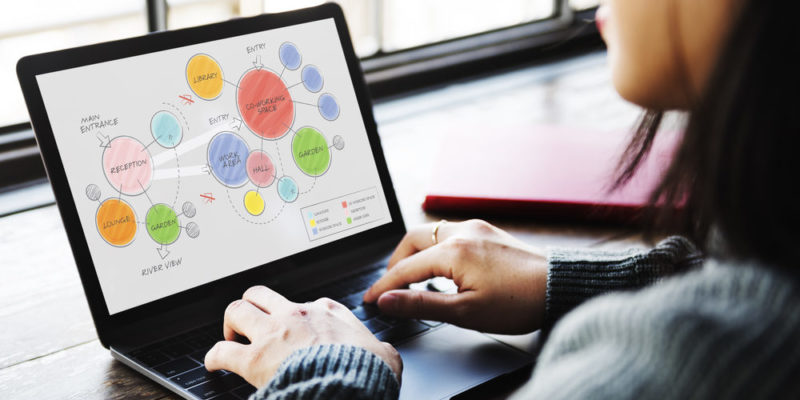We explain what a synoptic table is, the types that exist and what it is for. Also, what are its general characteristics and examples.
What is a Synoptic table?
Synoptic table or table synthesis is called a type of graphic-textual scheme that allows the distribution and hierarchy of information . It is used to translate the mental order into verbal categories or main ideas , followed by complementary ideas and then specific details, moving from the most general to the most specific.
The name synoptic table comes from the fact that we must make synopses. This means that it is a Synoptic, abstraction or simplification , of the topic that interests us. In it, the fragments are hierarchized to elaborate a complete scheme.
Its visual form is similar to that of a tree of ideas or an organization chart , but less reliant on visual organization and more on a logical sequence of concepts that proceeds in the same direction as you read . Depending on the type of frame it is, that direction can be from left to right or from the center to the sides.
Many times we use synoptic charts without even knowing what they are or what they are called. Knowing them will allow us to use them more efficiently in the study or in the preparation of oral presentations (as support material or as personal notes). In addition, it is one of the main study and note-taking tools known.
Synoptic table types

There are three types of Synoptic table:
- Synoptic table with keys. The most classic form of synoptic table, which separates the categories of the scheme with curly braces ( { ). It is posed from left to right.
- Synoptic table of Diagram . Use information boxes organized in a diagram, according to the hierarchy, linked by straight lines. In the center will be the main ideas and outwards the secondary or details.
- Network synoptic table. Rather, it is a graphic scheme in which the concepts weave a tree of concepts, linked to each other with lines, having the main idea in the heart or center and moving away as the ideas become supplementary.
What is a Synoptic table used for?
Synoptic tables are an excellent strategy for studying or organizing ideas . This is because it visually captures the path of thought from the most general to the most specific.
They are ideal for taking preparatory notes for an exhibition . They can also be used as support material in it, to offer the viewer a general perspective of the topic to be addressed, much easier to follow than simply explaining it verbally.
How is a synoptic table made?

The steps to prepare a synoptic table are as follows:
- The information to be represented is read until it is handled with ease. Something that is not yet understood or ignored cannot be represented.
- The main ideas and secondary ideas are underlined in the text and noted separately.
- Examples, particular cases and other items that, being very specific or particular, serve to understand or show those main and secondary ideas are identified and noted down separately.
- A first outline of the information is established, in which the main (general) topics are located on the left. A key is drawn in each one and then the secondary themes (sub-themes) that emerge from each main theme are located within said key.
- The operation is repeated, but now with the secondary themes: a key is opened in each one and the specific details and examples that allow the respective theme to be visualized are located inside.
- The set is reviewed and made sure there are no mistakes or mix-ups.
How is a Synoptic table used?

Synoptic tables can be used to:
- Summarize books, essays , or book chapters in a relatively simple outline.
- Expose complex ideas or dissertations through a graph to have an overview of what has been discussed and what is yet to be discussed.
- Develop study keys that we can then return to and have the main ideas of the topic in a few steps.
- Produce organization charts or structural diagrams of an organization or an organizational flow ( companies , institutions, etc.).
Can they be made online?
There are two free tools for building Synoptic tables: Freemind and Freeplane . It is specialized free software , which allows us to create and design this type of graphic schemes and other mental maps, through an intuitive interface and with tools.
There are also numerous web pages that will give us the option of making our synoptic tables online and downloading them.
Why are Synoptic tables important?
Synoptic charts are one of the most common forms of information representation . They can be adapted to all kinds of topics, no matter how complex and how deep the ideas.
They are an ideal tool for teaching and for oral speakers . Presentations can also be included as a general map of the topic to be addressed, which we can complete as we progress in the development of the topic.
Difference with a mind map

The main difference between these two methods of representing information has to do with the fact of the synopsis , which in the synoptic table is essential: summarize, rank and organize visually.
On the contrary, mental maps are a much broader category of information representation, in which more varied or even more personal forms are often used, which obey a personal logic or a particular way of thinking.
In everything else, Synoptic tables are essentially a kind of mental map.
How is the main theme identified?
The main topic of a text or an essay is the one stated in the title. In addition, it is constantly returned to throughout the reading , since it represents the heart of the text, its core of meaning.
The secondary ideas are organized around it , which are those that emerge or appear next, and from these last ones, in turn, tertiary ideas or specific details emerge, which are specific cases, examples and unique characteristics that refer to , usually only once during a short reading time.
What is a synopsis?
A synopsis is a Synoptic or an exposition of a topic or a subject , which includes its general points and allows a quick overview of the subject. This is what is done, for example, on the back of books, on theater billboards, or in other contexts where information needs to be presented quickly and to the point.
The above content published at Collaborative Research Group is for informational and educational purposes only and has been developed by referring to reliable sources and recommendations from experts. We do not have any contact with official entities nor do we intend to replace the information that they emit.
MA student of the TransAtlantic Masters program at UNC-Chapel Hill. Political Science with a focus on European Studies. Expressed ideas are open to revision. He not only covers Technical articles but also has skills in the fields of SEO, graphics, web development and coding. .
Leave a reply
Your email address will not be published. Required fields are marked *Recent post

Sport: What Is It, Types, Risks, Features, Characteristics and Examples

Dogs: Emergence, Features, Characteristics, Feeding and Breeds

Story: Definition, Elements, Structure, Features and Characteristics

